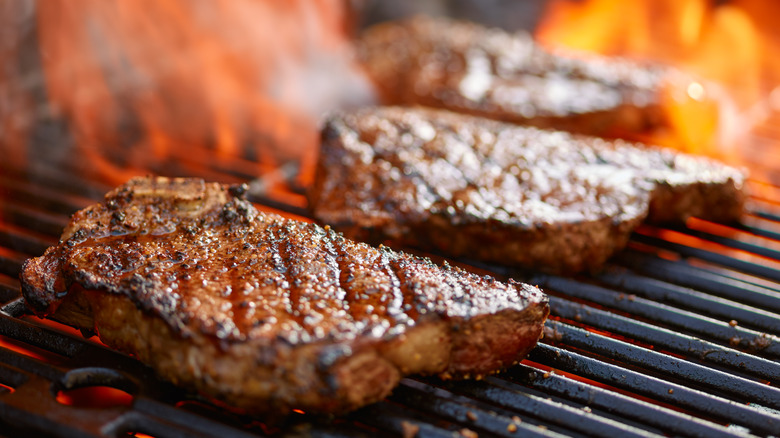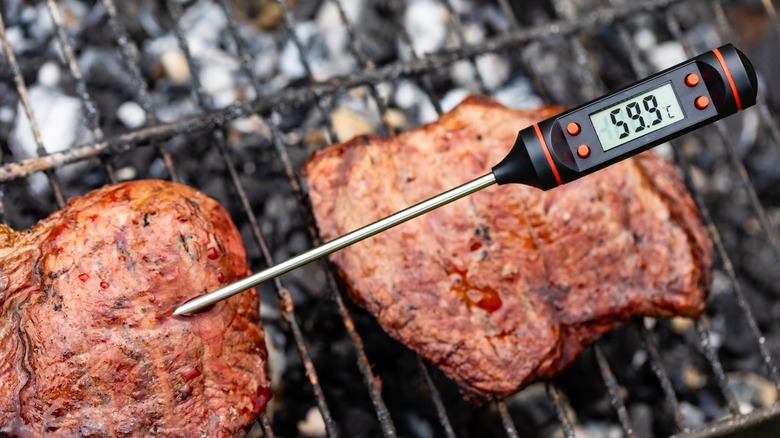The 'Rule Of 3s' You Should Consider When Grilling Steak
It's often said that cooking over an open fire is among the most difficult techniques for a cook to master, and it's true that manning a grill full of meat can be intimidating. But there are certain tips and tricks you can use to make sure that blackened, overcooked steaks are a thing of the past. One trick that is wonderfully simple is the so-called "rule of threes." It's an easy cooking technique that works great for average grocery store steaks (which are usually cut to around one to one-and-a-half inches thick), and can help you nail that perfect medium-rare cook every time.
There are four steps here: Grill one side of the steak over direct, high heat for three minutes, then flip and do the same on the other side. Then, repeat the first two steps, but over a lower, indirect heat. This is almost like searing your steak in a hot pan and then finishing it off in a cooler oven. You'll want to build your fire accordingly, so that you've got a super hot side for getting a great char on your steak, and a side off of the flames or coals that'll deliver a much gentler cook. If you've got a gas grill, this should be no trouble, but if you're grilling over charcoal, just keep your coals to one side of the barbecue drum to ensure that you've got space that isn't directly over them.
Variables worth considering with this steak grilling trick
As useful as the rule of three is, it isn't going to work perfectly with every piece of meat. For starters, cooking time will vary depending on the thickness of your cuts. Width can greatly vary across different cuts of steak, and you'll want to adjust the cook time accordingly: For something like a large porterhouse or tomahawk, you'll definitely need more than three minutes per side. Conversely, for a thin flat-iron or skirt steak, you might need a little less.
The same applies when it comes to the temperature of your grill. Again, a gas barbecue makes things easier here. A super hot grill will take less time to cook your steaks, so it's a good idea to keep a close eye on the temperature (or even use a spare steak as a test run to help dial in your cook time). The best way to ensure a perfectly cooked steak, though, is to use a probe thermometer – knowing the meat's internal temperature is pretty much the only foolproof method to tracking its doneness.
Finally, there's the matter of technique. Don't make the mistake of not letting your meat come up to temperature before cooking it, or it could seize up and become tough when it hits the grill. Cooking the fattier side first matters, too, and if there's a fat cap, give it time to render out. This will help that fat disperse throughout the steak, and fat means flavor!


